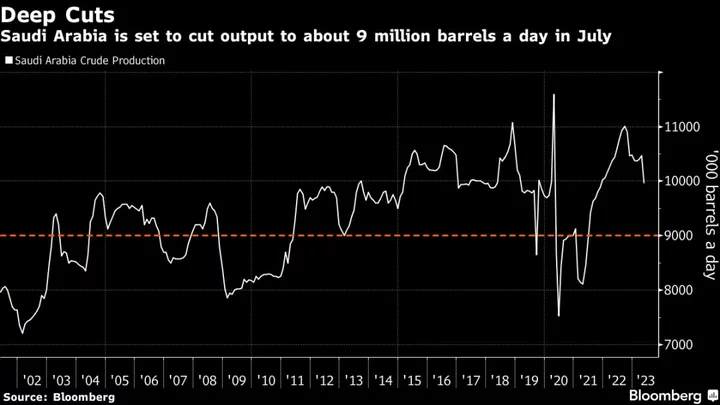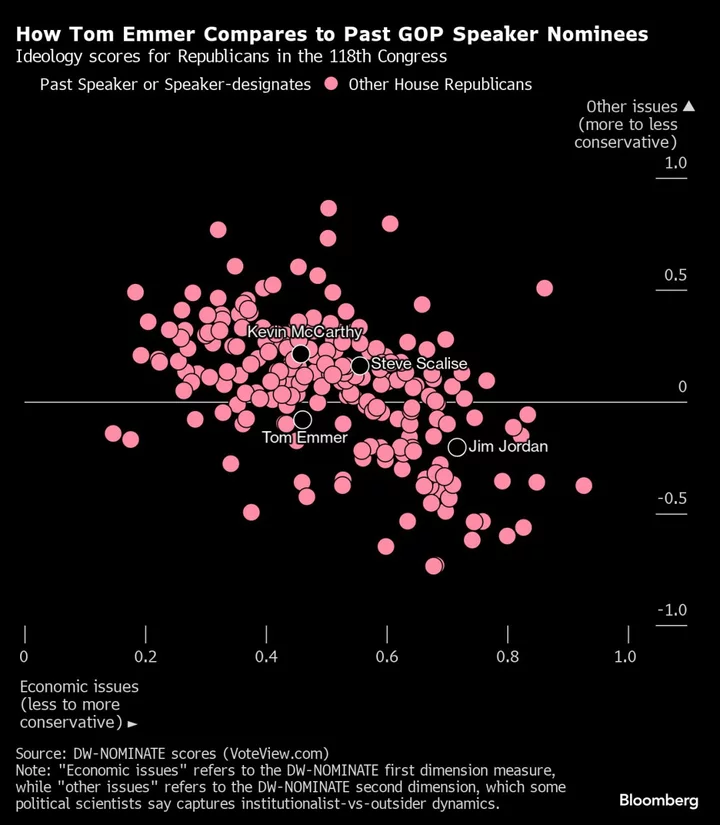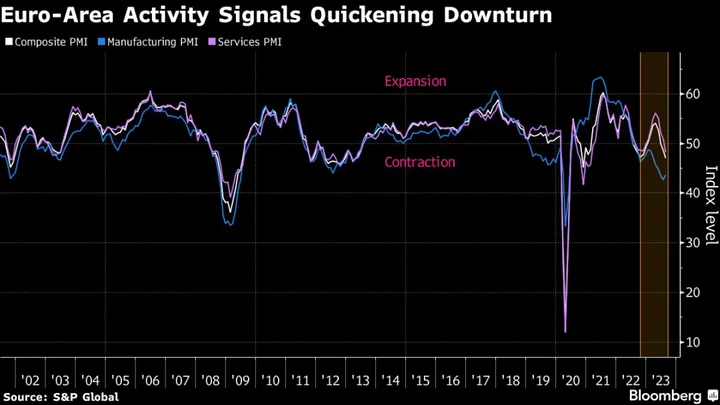Funds targeting strategies tied to water preservation are running out of assets to invest in, as a serious lack of supply in one of the most sensitive corners of ESG distorts valuations.
“We’d love to increase our exposure,” said Martin Todd, a fund manager at Federated Hermes who oversees impact and sustainable strategies worth about $1 billion. “But we either can’t find business models that are resilient enough, or valuations are out of line.”
Once associated mostly with developing countries, water scarcity is now also morphing into a rich-world crisis as climate change fuels both droughts and storms that threaten the supply of clean water. For now, there aren’t enough big companies devoting resources to addressing these challenges, Todd said. And that’s left the growing ranks of water investors with few good options.
“There’s not too many scale players ultimately and we’re not expecting suddenly to see a plethora of new companies coming to market that are going to be liquid and investible,” he said. “But we’re going to keep looking.”
It’s the latest example of funds with environmental, social and governance mandates hitting up against a shortage of assets. Earlier this year, the chief executive of Impax Asset Management Group, which runs one of the world’s biggest portfolios geared toward a low-carbon economy, said green investors face a lack of investible assets despite the latest wave of subsidies.
Hannah Lee, JPMorgan Chase & Co.’s head of ESG equity research for the Asia Pacific region, said prices around water assets are more likely to rise than fall. Water remains “fundamentally mispriced,” she said. Some of that is because water supply is often provided by public utilities, where “there’s not necessarily the ability to pass on price.”
But given the central role water plays across sectors, “the internal pricing of water could go up,” Lee said. That’s because as an asset, it’s indispensable for industries spanning everything from the manufacturing of semiconductors to agriculture; so water is “becoming a more critical input across different business lines,” she said.
Since 1970, the world has seen an 84% decline in freshwater biodiversity, with 2.3 billion people currently living in water-stressed areas, CDP, a nonprofit focused on environmental impacts, said earlier this year. It asked governments to “urgently” step in and act as water security emerges as a “significant financial risk to the global economy.”
Earlier this month, the world saw its first water tech unicorn, as an industrial water treatment specialist startup called Gradiant Corp. reached a $1 billion valuation. Meanwhile, the biggest water-themed companies are consolidating, leaving even fewer assets for investors to choose from. In January, Xylem Inc. agreed to buy Evoqua Water Technologies Corp. in a $7.5 billion all-stock deal. The company’s shares are held by some of the world’s biggest asset managers, including BlackRock Inc.
Federated’s Todd says he also owns Xylem shares in the funds he manages. But because of the takeover, “we’re seeing consolidation of two of the most interesting water companies in the US,” he said.
The demand dynamics around water also make it an attractive sector should the global economy lurch into the kind of recession that would follow a crisis of confidence in the US’s ability to pay its debts, Justin Winter, who co-runs a $7.6 billion water strategy at Impax, said. That’s as a resolution to debt-ceiling talks remains elusive, and markets brace for a turbulent period ahead.
“If a default in the US triggers an economic contraction,” utilities will “keep going along,” Winter, whose portfolio consists 20% regulated water utilities, said.
Overall, the fund industry has built up its exposure to water assets by more than 170% since the start of 2019, and the strategy now counts 58 funds overseeing more than $39 billion in total, according to data provided by Morningstar Inc. Those figures don’t include impact strategies or ESG funds like Todd’s, where water accounts for about 3-8% of all assets.
“If we found more ideas in water, it could easily go up,” Todd said. Water is “an example of a theme where we could easily have double-digit percentage exposure but you know, we just haven’t found the ideas yet.”
Winter, who calls water stocks a “constrained universe,” expects the Biden administration’s Inflation Reduction Act, as well as the rollout of infrastructure investment in the US, to provide a tailwind for the sector.
The US policy around water is a “response to the fact that a lot of infrastructure is really creaking under the strain of how old it is,” Winter said. Investors who get in now stand to benefit for years to come, he said.
(Adds reference to CDP letter in eighth paragraph.)









